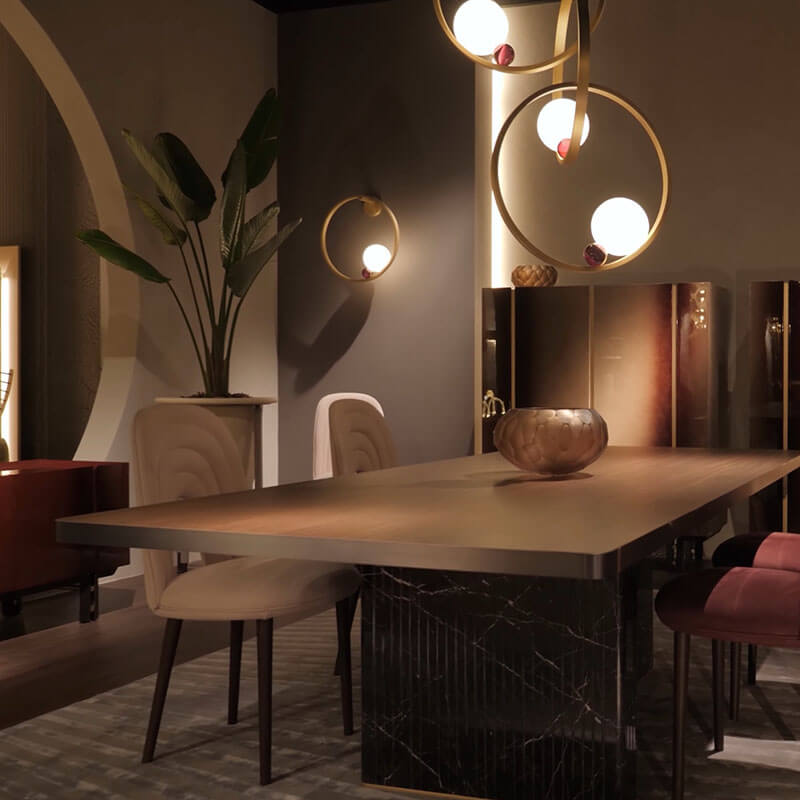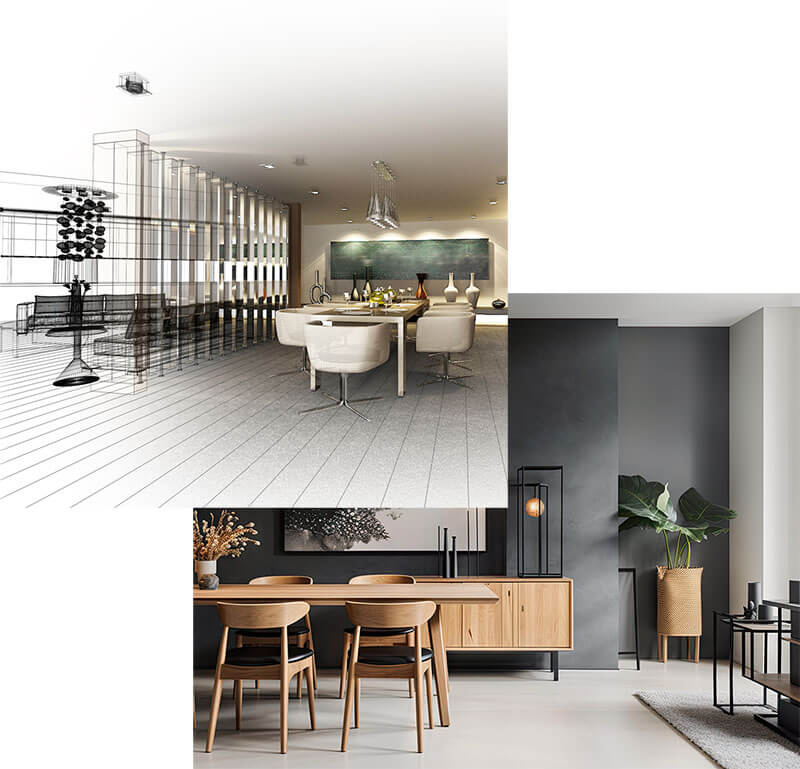Interior design: reimagining homes and workplaces
Interior design is not just about creating an aesthetic space, but also about creating a balance between function, comfort and ergonomics. This complex process involves the careful selection of materials, colors, furniture and accessories, as well as optimizing the structure and layout of the space.
What is interior design?
Interior design is the art and science of improving the functionality and aesthetic appearance of interior spaces. Designers aim to create an environment that meets the needs and preferences of its users while also being aesthetically pleasing. This process includes spatial design, lighting design, furniture and material selection, and the design of decorative elements.

The interior design process
1. Initial Consultation and Design:
The first step in interior design is to understand the client’s needs and preferences. This includes analyzing the use of the space, exploring aesthetic preferences, and determining the budget.
2. Concept Development:
The designer creates a concept design that includes floor plans, color palettes, furniture and material selections, and lighting plans. This phase allows the client to visualize the final look and function.
3. Detailed Design and Construction:
Based on the approved concept, the designer creates detailed plans that include material lists, construction schedules, and other technical details. This phase also includes supervising the work to ensure that the plans are accurately implemented.
In recent years, our company has also started to produce custom-designed furniture in order to take interior design to the next level. For these projects, we also use materials from manufacturers that use high quality and designed artistic solutions.
Trends in interior design
Interior design trends are constantly changing, reflecting social, cultural and technological changes. Here are some recent trends:
Sustainability:
There is a growing emphasis on environmentally conscious design, which includes the use of recycled materials, energy-efficient lighting, and water-saving appliances.
Smart Homes:
Advances in technology are enabling the creation of smart homes, where devices and systems operate automatically, improving the quality of life and comfort of residents.
Minimalism:
Minimalist design continues to be popular, relying on clean lines, simple colors, and the elimination of unnecessary objects to create a calm and orderly environment.
Biophilia:
Integrating elements of nature into interior spaces, such as plants, natural materials, and natural light, helps reduce stress and improve well-being.

The role of the interior designer
A good interior designer is not only responsible for the aesthetic design of a space, but also for ensuring that the space is functionally appropriate. Designers must be familiar with building standards and regulations, and be able to collaborate with other professionals such as architects, engineers, and contractors.
The essence of interior design is to create spaces that are not only beautiful, but also practical and comfortable. This complex and creative process requires attention to detail, a balance between functionality and aesthetics, and an understanding of the client’s needs and desires. Whether it is a home, office, or community space, a well-designed interior can significantly contribute to improving the quality of life.

